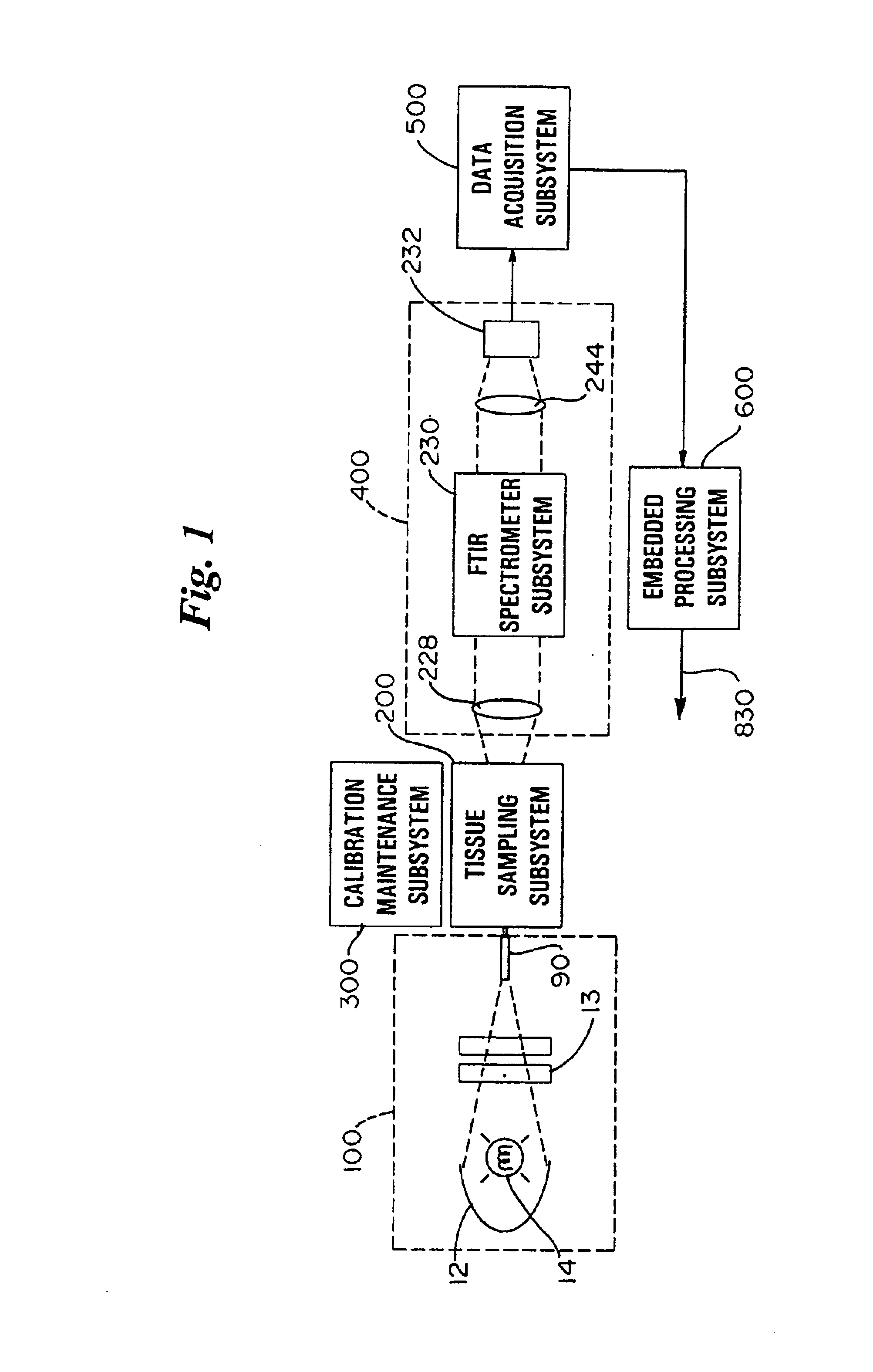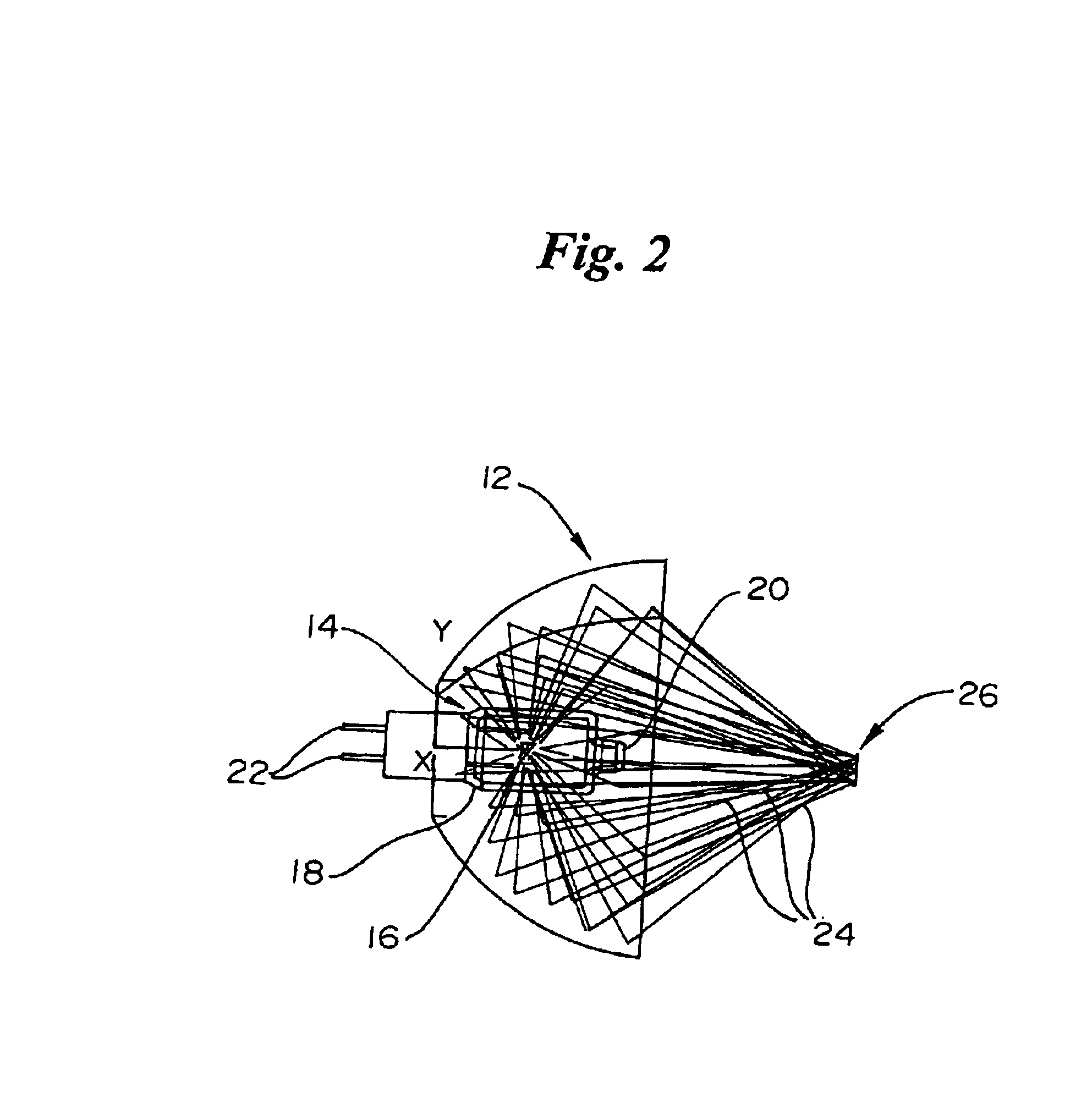System for non-invasive measurement of glucose in humans
a glucose and human body technology, applied in the direction of optical radiation measurement, diagnostics using spectroscopy, instruments, etc., can solve the problems of high signal-to-noise ratio and photometric accuracy requirements, and achieve high optical throughput, high photometric accuracy, and efficient collection of diffuse reflectance spectra
- Summary
- Abstract
- Description
- Claims
- Application Information
AI Technical Summary
Benefits of technology
Problems solved by technology
Method used
Image
Examples
Embodiment Construction
The following detailed description should be read with reference to the drawings in which similar elements in different drawings are numbered the same. The drawings, which are not necessarily to scale, depict illustrative embodiments that are not intended to limit the scope of the invention.
Referring now to FIG. 1, a non-invasive glucose monitor system that is able to achieve clinically relevant levels of accuracy and precision is depicted in schematic view. The overall system includes six subsystems. The subsystems include an illumination subsystem 100, a tissue sampling subsystem 200, a calibration maintenance subsystem 300, an FTIR spectrometer subsystem 400, a data acquisition subsystem 500 and an embedded processing subsystem 600. The subsystems have been designed and carefully integrated in order to ensure that the glucose net analyte signal-to-noise ratio is preserved to the maximum amount. The glucose net analyte signal is the portion of the near-infrared spectrum that is sp...
PUM
 Login to View More
Login to View More Abstract
Description
Claims
Application Information
 Login to View More
Login to View More - R&D
- Intellectual Property
- Life Sciences
- Materials
- Tech Scout
- Unparalleled Data Quality
- Higher Quality Content
- 60% Fewer Hallucinations
Browse by: Latest US Patents, China's latest patents, Technical Efficacy Thesaurus, Application Domain, Technology Topic, Popular Technical Reports.
© 2025 PatSnap. All rights reserved.Legal|Privacy policy|Modern Slavery Act Transparency Statement|Sitemap|About US| Contact US: help@patsnap.com



